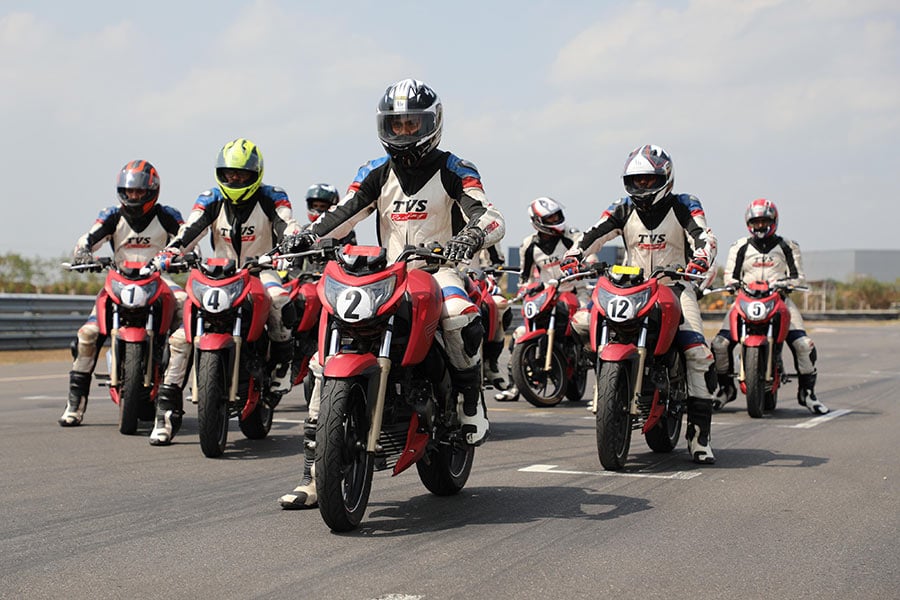
Learning the Art of Track Racing – TVS Young Media Racer Program
There a few questions racers get asked more often and try to answer these with the best possible explanation they can give to make a journalist understand what went on throughout the race. We humbly listen to everything they say and type down these thoughts in the articles we publish. But its not often for a young journalist like me to understand the feeling of a racer while he is on the track and if we did, we could relate to the explanations better and really understand what goes on in a racer’s mind while on the race track.
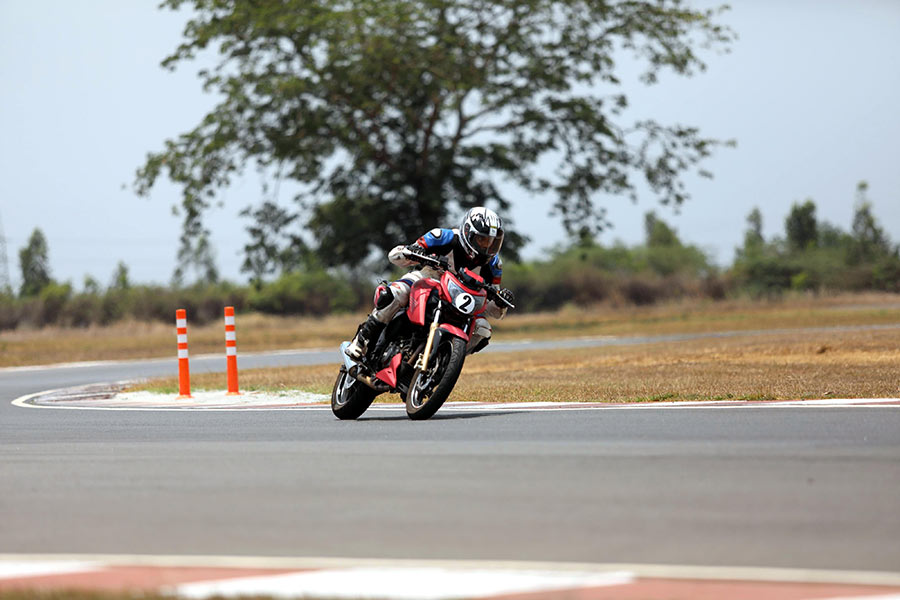
Every motorcycle journalist would have a dream of getting on the race track and be a part of the adrenaline pumping action, for at least once in his/her lifetime. We believe TVS read our minds exactly the way they are and invited us to be a part of the TVS Young Media Racer Program, this April, and I, honestly couldn’t ask for more. TVS Young Media Racer Program is an initiative taken by TVS to educate young Media journalists about track racing and get a feel of it in real life. Where better than MMRT for conducting this program, right? A total of 12 journalists were invited to Madras Motor Race Track (MMRT) in Chennai, for this year’s Young Media Racer Program and I was very happy, to be one among them. The training mainly consisted of 3 learning sessions and 1 free practice session. An overview of every session, as you read on.
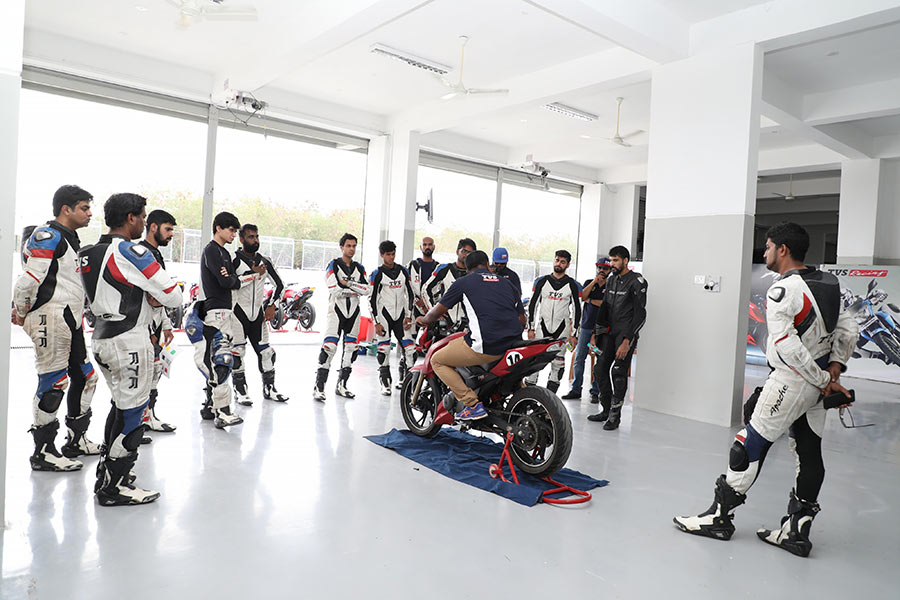
Training on the Lines + No brake drill
This was probably the one and only theory class I have loved to attend of all the other ones I went to and probably the only time I was in the first row of the classroom. Trust me, it’s true. The day started off with a briefing session by TVS Racing team and we learned about the 35 years of racing TVS has been a part of. We were introduced to Harry Sylvester, our training instructor for the day, Jagan Kumar and KY Ahmed, who are all a part of TVS racing. Having learnt about what different flags meant, max speed to be followed in the pit lane, entry and exit off the pit lane, it was then time to hit the track and get a feel of it.
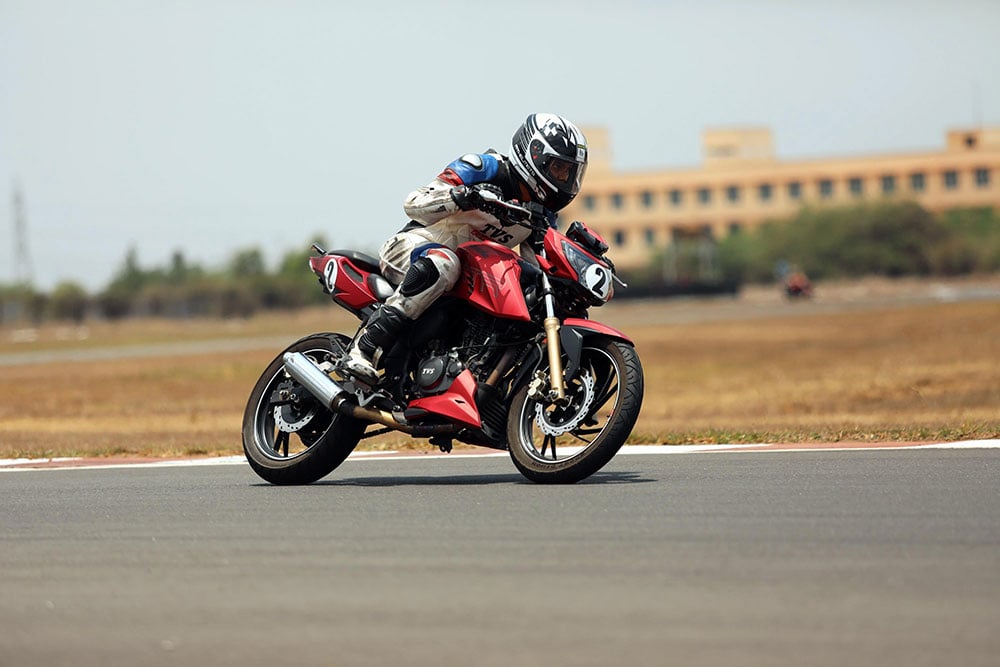
As we walked out the classroom, I could not wait to get my hands on the race spec TVS Apache RTR 200 we were going to own for the rest of the day. It was race-suit up time, which proved to be a struggle, thanks to the Chennai heat. Gulped plenty of water, helmet on, gloves worn, bikes cranked, photos clicked, time to roll. Led by Jagan Kumar and KY Ahmed, we were divided in two groups, each of us on our TVS RTR 200s went around the track to get our lines straight. The instructors led us through apex points on each corner and pointed out marshal spots around the track. This was also a no brake drill, which meant we had to ride throughout the track with a single gear and work to gain better throttle control.
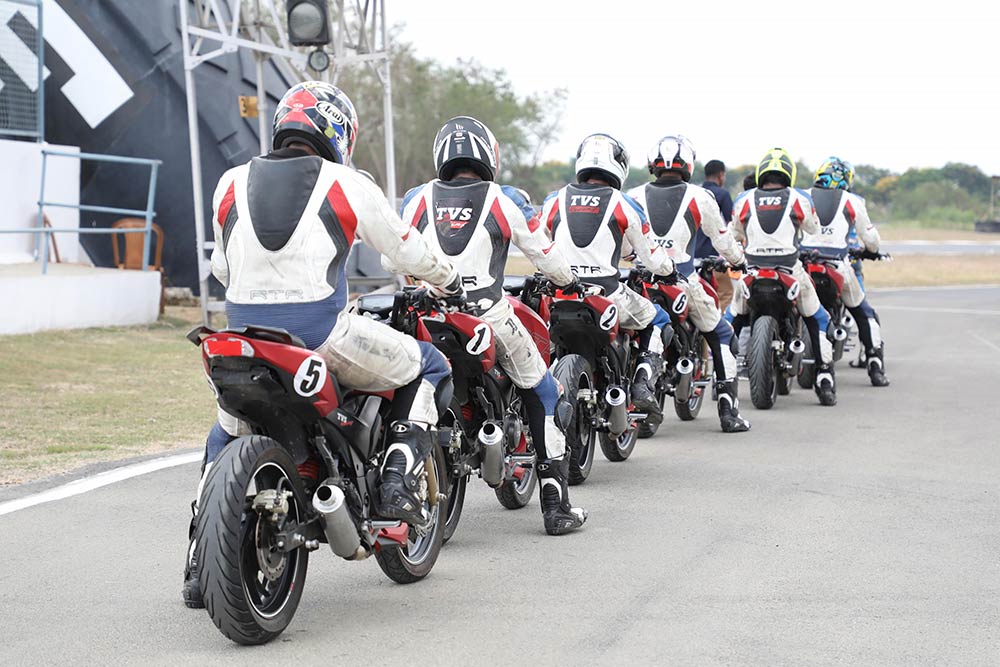
Body Posture Training
The second session was all about getting your body posture right while on the race machine. Racing requires you to extensively use your body to enter and exit corners while maintaining speed for better outcome. Harry spoke about how important it is to grab your bike, duck and stay light on the handlebar. Each of us took turns to practically try out body positioning on a parked motorcycle, after which, we were taken back on the track led by our instructors to put to use everything we had learnt for the past hour. It’s then that I realized how huge a difference body positioning makes while riding at high speeds. Taking corners at high speeds kept getting better and better for me as I improved the way I sat on the beautiful RTR 200. If there’s one more thing I learned during this sessions is how important fitness is for racing, As I kept getting better with corners and getting my knee down, by body, for some reason – blame the Chennai heat, did not let me push further more as I started developing a muscle cramp on my left leg. Session done, got off the track, drank plenty of water. Drank plenty more and geared up for the third lesson.
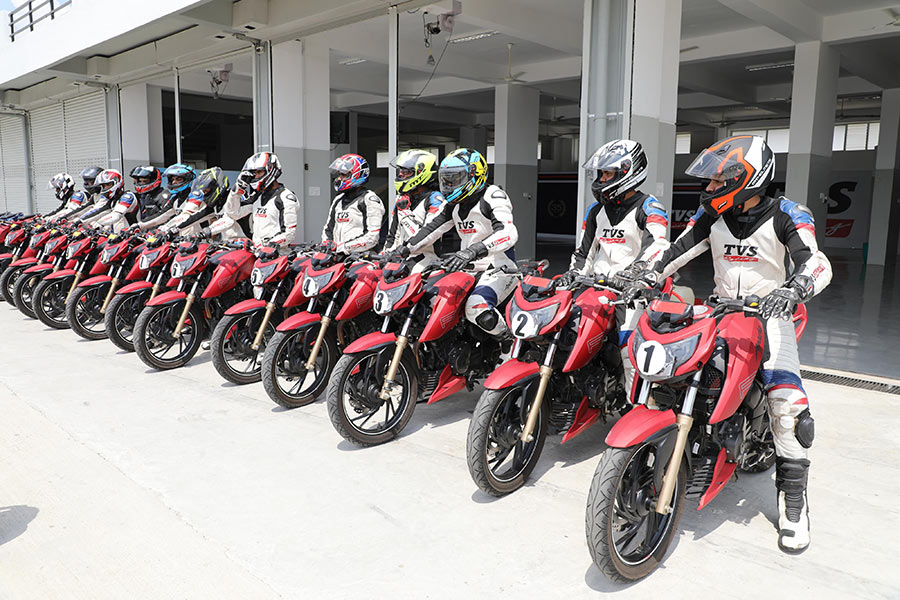
Braking and Start Practice
As important as following lines and body posture is, braking and having a good race start is equally important. A bad start and the race is half lost. Brake too late and you might run off the track, brake too early, you lose corner entry and exit speed. To have a good start, we were instructed to engage 1st gear, rev the engine up to 4500 – 5000 RPM, a finger on the front brake, slow release of the clutch lever until the clutch engage was felt. As the lights go off, release the brake, clutch lever in a gentle manner and pin the throttle to get the best start off the line. The fear of having a bad start may have you release the clutch lever abruptly, but this will only have the motorcycle pop a wheelie and no good can come out of this, specially during a race start. Out on the street, majority of us use the rear brake but on the race track, it’s a different story. We were instructed to use the front on majority depending on how comfortable we were using both with maximum usage of the front.
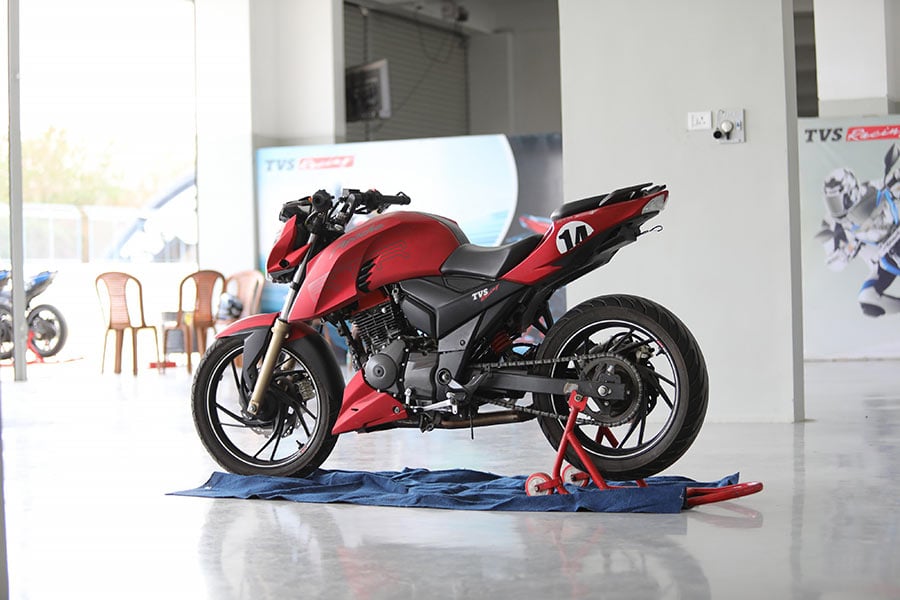
I then found myself on the home straight, ducked down, full throttle, pushing the bike to gain as much speed as I could before C1 showed up. Easily cornering the first turn, down shifting to 4th, carrying slightly high speed onto C2 got me off the track as I wasn’t confident enough to take a tricky C2 with that speed. Ha, it’s alright, this was when we were let free for a final practice session on the track. But practice is what makes us better and the next time around, C2 was taken care off easily while entering C3 with a grin on my face. It’s race season in June, so stay tuned on GaadiKey for more.
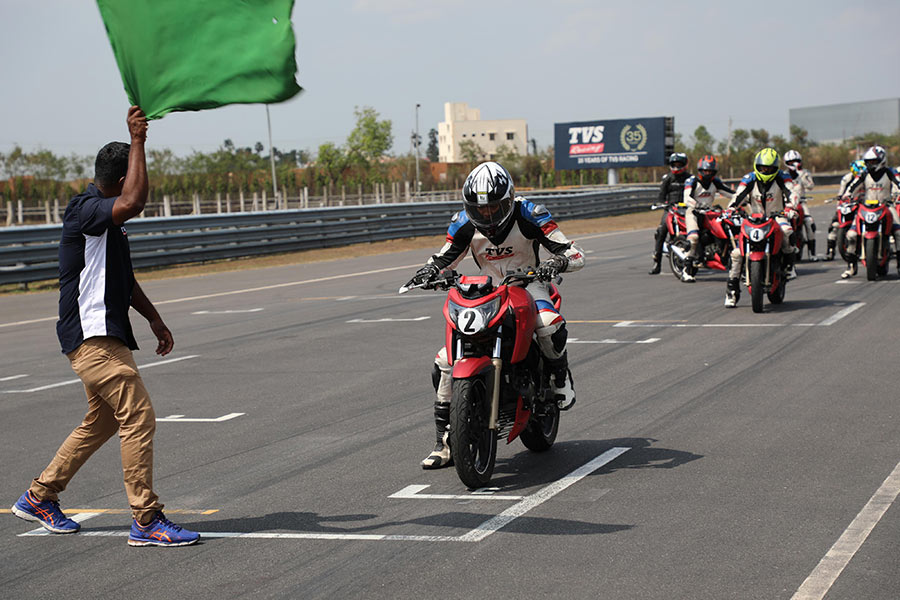
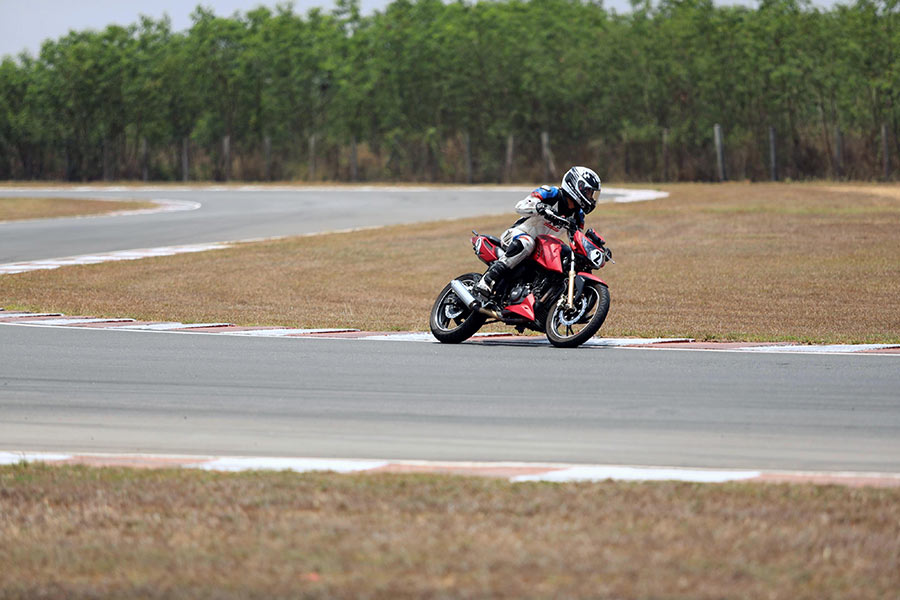
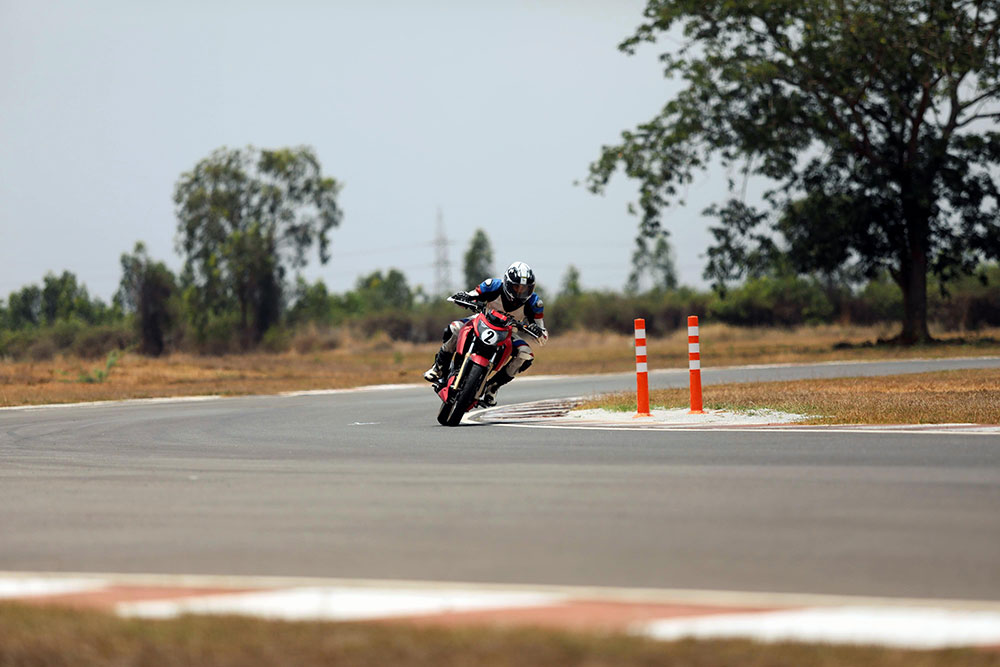
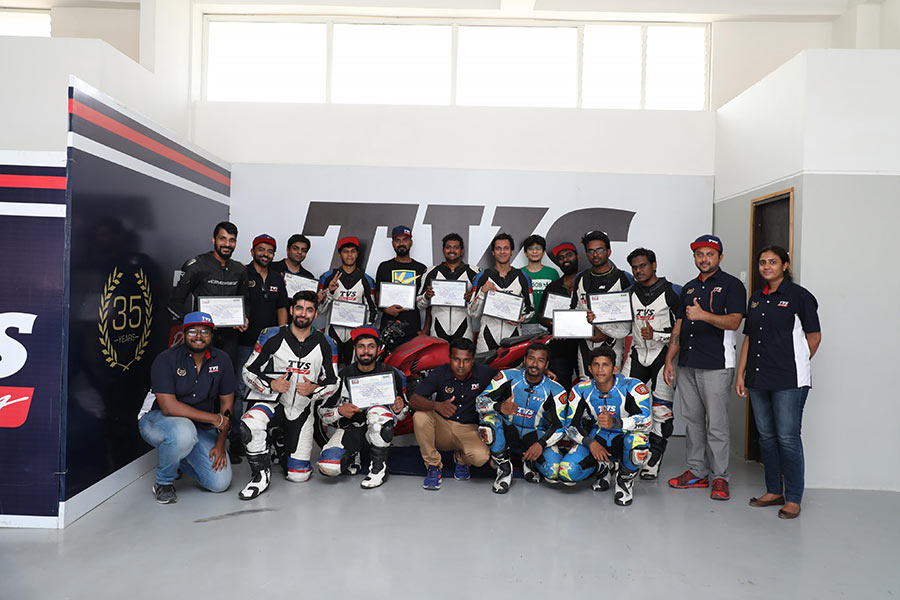
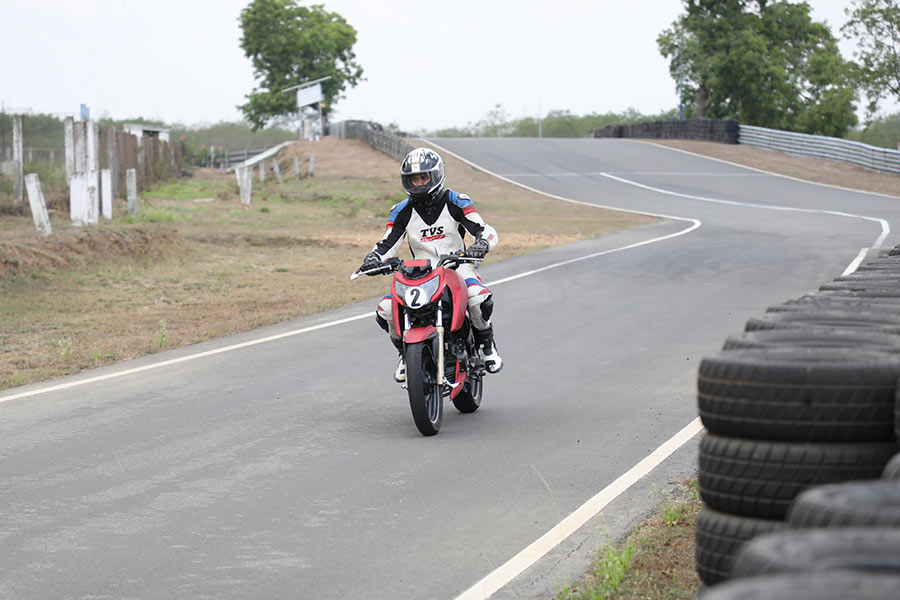
You can add more to this story by commenting below.
You may view all the pictures in the gallery below or at photos.gaadikey.com .


















